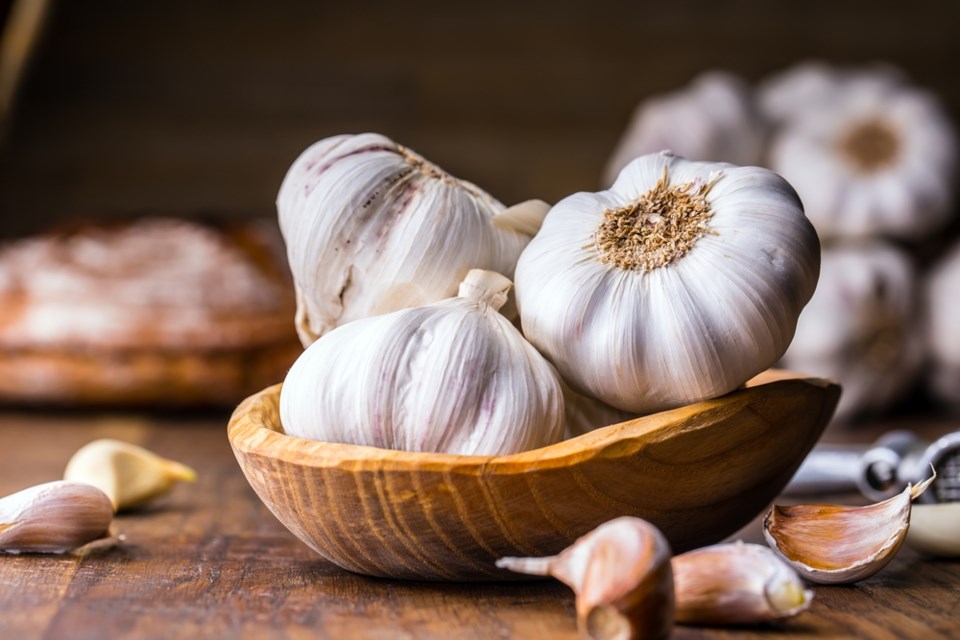Funding worth $5.5 million by the federal and provincial governments for livestock production research includes the study of garlic as part of a livestock diet.
Garlic has been used by some humans to promote better heart health and disease resistance, although some cynics believe the main benefit of garlic ingestion is keeping people with infectious diseases away.
Evidence from studying sheep in Asia indicates garlic feed additives have beneficial impacts on digestion, for antimicrobials, as an anti-inflammatory, anti-oxidant and for immune system stimulation.
A Saskatchewan Agriculture trial in 2017, using garlic in cattle minerals, discovered the smelly stuff may control flies.
The average fly count fell from 158 to 67 flies on animals with garlic in their summer minerals. Animals with garlic in summer minerals ate more minerals — 145 grams per day compared with 45 grams for animals without garlic in their summer minerals.
Evidence also indicates garlic feed additive may reduce methane gas emissions.
A $119,000 study at Alberta’s Lakeland College will investigate use of garlic powder effects on mineral intake, fly repelling and cattle performance.
A $348,000 study will consider anti-microbial bacteria use to prevent or treat respiratory disease in feedlot cattle.
Measuring greenhouse gas emissions from beef cattle urine and dung in pastures seeded with non-bloat legumes will take $140,000.
Johne’s Disease of the intestines has two studies — $80,000 to develop rapider tests and $85,000 to compare and develop testing options.
The effects of sulphates in water on beef feed intake and performance got $83,000.
A $199,000 grant will study vaccines in swine that trigger immunity in piglets, vaccine to protect against intestinal bacteria Lawsonia intracellularis, and an oral vaccine to stimulate piglet immune systems.
Another study for $210,000 tries to develop a next generation vaccine for PED (swine influenza).
Bio-security measures to control pathogen growth in antibiotic free pigs takes $135,000 and $125,000 will be spent on infrared technologies to identify pigs at risk of transport stress and death loss, while $177,000 goes to enhance bio-security and welfare of livestock during transport.
The potential of hybrid rye as a feed for finishing pigs take $59,000.
In poultry, $150,000 will research a vaccine for avian flu and $127,000 will study processing camelina meal to increase Omega-3 content in eggs.
Study in honey bees includes $195,000 to monitor and control American Foulbrood — a fatal bacteria.
Using pulse proteins and canola oil emulsions in meat products will take $339,000.
Development research on permeable biological barriers to remove ammonia and nitrate from run-off water takes $150,000.
About $4.4 million of the grants were awarded to the University of Saskatchewan. Five partners put up $320,000 with the Saskatchewan Cattlemen’s Association highest at $181,000.
Ron Walter can be reached at [email protected]




